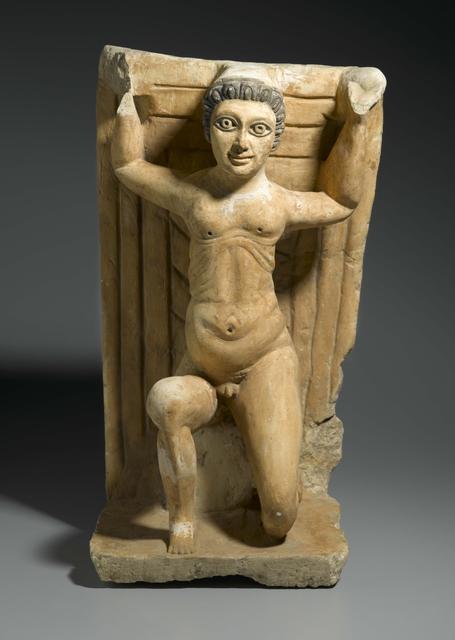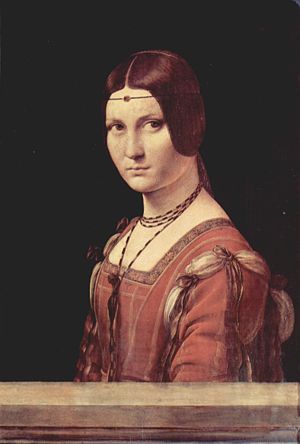
Most visitors don’t expect to see fakes in an art museum, but an exhibition at the Brooklyn Museum, Unearthing the Truth: Egypt’s Pagan and Coptic Sculpture, does just that. For the exhibition, which is on view through May 10, curator Edna R. Russman has gathered authentic works, complete forgeries, and recut or repurposed examples, all from the museum’s collection of Late Antique Egyptian art, to give museumgoers the opportunity to see them side by side and to test their own eyes. The show also raises important issues regarding collecting practices, connoisseurship, scientific research, and the material culture of fakes. To address some of these topics, on Saturday April 18, the museum hosted a panel discussion, moderated by Brooklyn Museum chief curator Kevin Stayton, that brought together three distinguished voices on issues of authenticity.
The first speaker was Dr. Gary Vikan, art historian and Director of the Walters Art Museum, who, in the 1970s, was one of the first scholars to identify the Coptic art fakes in the Brooklyn’s collection, and in 1987 organized the exhibition Artful Deception: The Craft of the Forger at the Walters.Vikan gave a lively presentation, peppered with personal antecdotes, visual quizzes, and memorable quotes. He recollected being chastised in his early career by an eminent scholar who said, “To call a fake genuine is a mistake—to call a genuine work a fake is a sin.” Vikan used a cartoon image of a Boston terrier to unmask a fake lion-dog aquamanilia (a comparison you may have to see for yourself to truly appreciate), and referenced Malcolm Gladwell’s Blink in describing the rapid cognition (termed “Eye-Q by Vikan) that has led several curators to question the authenticity of the Getty kouros.

Ronald Spencer, an attorney who specializes in art law, is legal counsel to the Pollock-Krasner Foundation among many other advisory posts, and editor of and contributor to The Expert Versus the Object: Judging Fakes and False Attributions in the Visual Arts (Oxford University Press, 2004) gave the second talk, which focused on issues related to contemporary art and problems of attribution. In particular he discussed the process of compiling an artist’s catalogue raisonné and the ways in which many works not intended to deceive often become falsely attributed. Spencer also touched on the legal quandary for curators and other art historians in giving opinions about works of art, citing a 1929 case in which Joseph Duveen paid $60,000 in compensation to Mrs. Andrée Hahn over his comments that her Leonardo da Vinci painting was a fake. As he said, quoting the art historian Ted Stebbins, “That decision forever instilled in the minds of scholars that opinions are dangerous things to give.”
The last speaker was Nancy Hall-Duncan, senior curator at the Bruce Museum, where, in 2007 she organized the exhibition Fakes & Forgeries: The Art of Deception. Hall-Duncan retold many of the fascinating discoveries she made while working on the exhibition, which borrowed several works from the FBI. Her talk suggested that many fakes reveal themselves in time, citing the Victorian-imbued “medieval” manuscripts of the so-called “Spanish Forger” and the case of a Norman Rockwell painting that was copied by its owner, cartoonist Donald Trachte, and then hidden behind a false wall in his home, presumably to keep the real painting from his ex-wife. Though questioned for many years, the replica had been exhibited as the real thing. Hall-Duncan also discussed many of the well-known forgers (some coming from the field of art restoration)—from Han van Meegeren to Elmyr de Hory.

A question and answer session followed the presentations, where the speakers addressed topics such as the role of science versus connoisseurship. Spencer noted that science rules out authenticity only when age is the main consideration, and cited the 1968 Rembrandt research project, which, to his knowledge, has not had a single reattribution since. When further pressed by the audience to explain how a curator develops a feeling or instinct about a fake—each of the panelists reiterated their own experiences and the many years it can take to reach a decision. Vikan concluded, “Everyone is a connoisseur of something whether it’s beer or chocolate or cigars—when you have a Hershey’s bar with a Godiva label you know something is wrong—but if you have a Godiva bar with a Hershey’s label—then you got lucky.”
